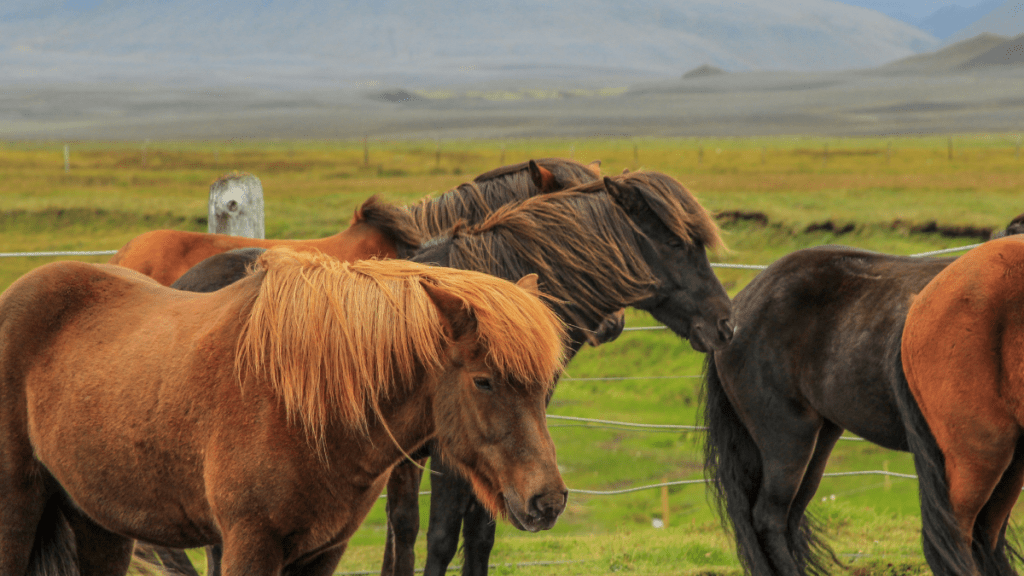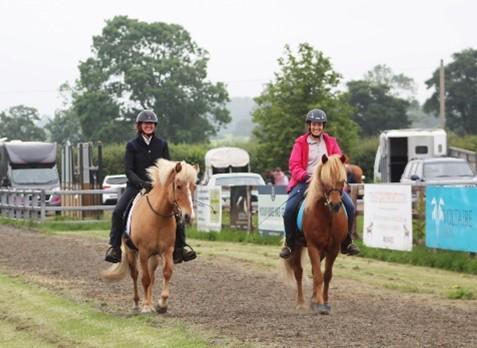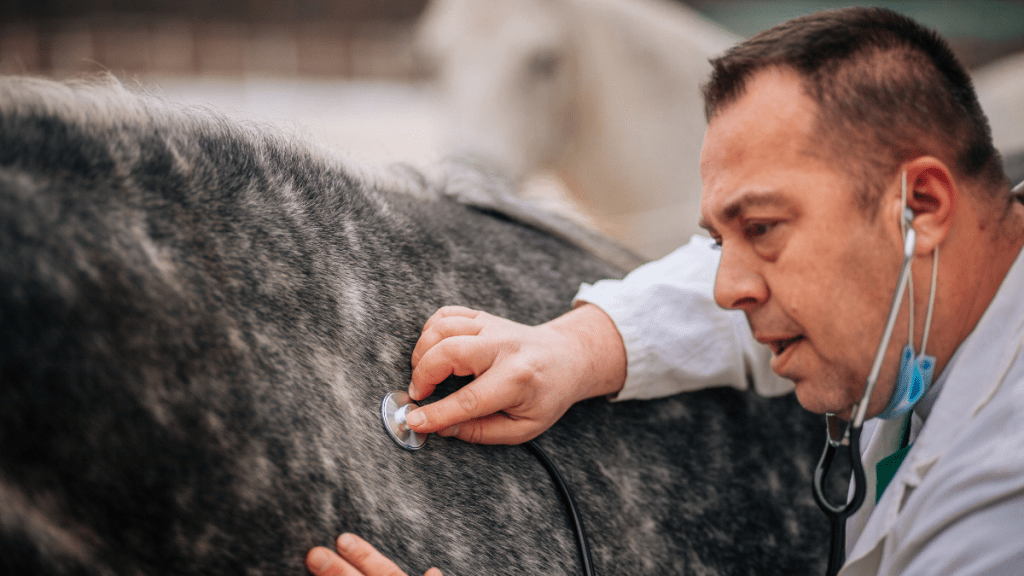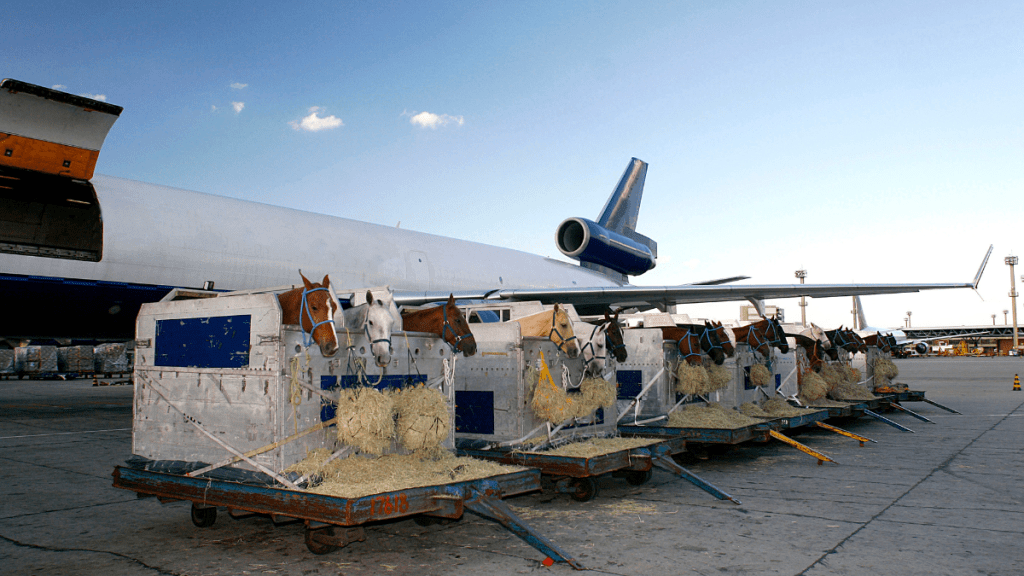BUYING AN ICELANDIC HORSE – SOME GUIDELINES
by Mike Adams
Buying a horse is always a big event in any rider’s life. Buying an Icelandic Horse has some extra complications, some of which will depend on what you personally want to achieve and what you are prepared to do to get to that goal.
This guide is to help prospective buyers have a positive experience and avoid potential pitfalls. The information is drawn from our personal experiences – we have bought over 40 Icelandics since we started in 1994 – plus the reported experiences of many other owners. The general advice offered applies wherever the horse is purchased. There is specific information on buying a horse abroad.
If this is to be your first Icelandic, then you need to know what you are hoping to gain from owning one. The Icelandic Horse is very seductive because of its versatility – strength, robustness, gaits, character, power and speed, but not all Icelandics have the same attributes and capabilities so you need to be very clear where your expectations are so that you don’t have a huge and expensive disappointment.
This may be your first experience of a “gaited” horse. Icelandics are generally classified as either 4 gaited or 5 gaited but in reality this is a broad spectrum ranging from very trotty or diagonal to very pacey or lateral. As a general rule, a horse that is toward pacey – four and a half gaited is a term sometimes used – is easier to keep in tolt than a horse that easily falls to trot. If your goal is to ride comfortably in tolt on hacks or endurance rides, a more lateral horse could be more suited. If you love schooling and have good dressage techniques, a more trotty horse may suit you. Icelandic competition and pace riding are more specialised disciplines and need horses of a certain willingness with the appropriate range of gaits. On the subject of willingness, this is something that is specific to each horse and each rider and can only be properly assessed by riding, preferably in the open.
How did you first become interested in buying an Icelandic Horse? This is an important question because you need to be clear about what you expect from your purchase.
If you have been to Iceland and ridden on a tour with other horses, you will have primarily been a passenger on a horse that has been selected for that job and who is running with his temporary herd. The tour leader will have identified the animals that would give you the best experience and been able to change that if the choice was wrong. Iceland has loads of space and few obstacles. Be aware that this experience can never realistically be replicated in the UK.
If your Icelandic Horse experience is in the UK or Europe, repeating that feeling could be a realistic goal because the horse you rode will be used to more closed spaces, traffic and will have been eating European type foodstuffs.
Your riding.
You need to realistically assess your own riding capability and be prepared to modify or even “unlearn” some traditional riding rules if you are to enjoy riding gaited horses. If you are a moderately confident, competent, well-balanced rider who understands some simple collection techniques and are prepared to spend time and maybe take lessons, you should be able to find a horse that will allow you to enjoy your purchase and experience the joys of tolt riding. However, if you aren’t prepared to accept that these horses are skeletally different and therefore move differently and just wish to use traditional equipment – bits, saddles and shoeing – then you could seriously compromise your chances of riding a balanced ICELANDIC HORSE in a harmonious way.
In any event, it is really important that you have experienced riding Icelandic Horses in “normal” conditions before you make any decisions. Find someone who is prepared to allow you to ride their horses and help you get the right feeling. The more horses you try and the more hours you ride will dramatically improve your chances of making a good decision and finding the right animal. Be very clear on what amount of forwardness you are comfortable with. This is very important.
You have identified the breed as “different” and that difference needs to be recognised, respected, maintained and managed.
If you aren’t interested in the uniqueness of the breed and the possibility of riding gaited horses, then perhaps the question is “Why buy an Icelandic Horse?” There are less complicated riding options.
The buying process
Most people buy their Icelandic Horse by visiting the seller after seeing the horse demonstrated on a sales video. People have bought horses on the basis of video recordings only. There are very obvious risks here.
Because the horse buying process has so many variables plus a load of emotion, it is vital that you do as much preparation as possible.
You need to research the horse sellers. There are a lot on Facebook. They are mostly “horse dealers” and some will have sold horses to the UK and understand our market. These would normally be able to show you more than one horse or even get something else in for you to try. Some horses will be offered for sale by the owner with you visiting their farm or meeting at a riding facility.
When you arrive at the selling farm, you will have a mixture of high excitement and nervousness. Always remember that you don’t have to buy anything. Also remember that when you see the horse being ridden, this is a sales show to get you to buy a horse. What you see is the best it can be at that time. Also remember that the rider will probably have ridden Icelandics all of her/his life and possibly come from a long line of riders. Don’t be afraid to ask loads of questions and say if the horse looks as if it is too powerful for you.
When you try the horse, you will be riding and enjoying the hours of training that the horse has been through so what you feel is the best it will be. If you have the opportunity, ask to come back on a subsequent day and ask if you could be the “first” rider. This will give you a better idea of how the horse responds when it is fresh. Also ask to ride outside and take the horse away from the stables so that you are able to have more influence. Take care when you turn back and be happy that you are able to stay in control. Ask someone to video you on the horse as much as possible. You can compare what you got with the demonstration rider.
When the horse is being demonstrated to you, video everything. Make sure you photograph the hooves (lift them to photograph the shoeing and any soles and measure or estimate the hoof lengths). Take note of the saddle type and ask which saddles the rider uses with this horse. Typically, the rider may use the same saddle on all horses. See if a riser of any kind has been used under the saddle and if so, ask why. Also take very careful note of the bit, bridle and noseband. Record the type of bit, the size and the what kind of rings. Take special note if an “Icelandic or curb “bit is used. Ask if other bridles have been tried and what the result was.
It is advisable to take a “trusted advisor” with you – someone who knows about Icelandics and preferably knows a little about you. The person you take should be independent of any of the potential sellers or at least should declare any interests, relationships etc.
Vetting. It is advisable to get horses vetted before buying. If you are at all unclear about anything on the report, you should clarify this with the vet.
Buying in the UK, Europe and Scandinavia
If you buy from the UK, Scandinavia or Europe and subject to negotiation, horses may be able to be returned to the seller within a fixed period, usually at a cost. You should always push for this option. Brexit has significantly increased the cost of transporting horses in and out of the UK.
Buying in Iceland
Try and organise your trip effectively so that you have time to see enough horses and give yourself time to ride horses more than once.
Know your budget and work it back so that you know how much you can spend on the horse. For instance, if you have £10000 for the project, the budget when buying from Iceland could look like this (all amounts are suggestions only) (date 2023).
| 3 day trip to Iceland for 2 people inc. car hire | £1800 |
| Vetting, transport and airport costs to Liege | £2000 |
| Transport and customs clearance to UK | £1000 |
| Total costs | £4800 |
| Amount left for horse and VAT | £5200 |
| Amount available to offer for the horse | £4333 or ISK750,000 |
If you decide to buy a horse in Iceland, remember it can never go back.
It is helpful to realise what the likely routine of the horse has been for its adult life in Iceland. The vast majority will have been kept in large groups when they aren’t being worked. They are rounded up and brought into the stables, often sharing a stable with another horse. Grooming will be minimal and absolutely no petting other than a gentle stroke of the mane or face as a thank you. It will not have had many treats. The horse will be trained or worked as needed for around 30 minutes, often with another horse. It will probably have been ridden outside on long tracks from the beginning to make it think forward and get its own balance. A lot of trainers will have frequent “rektstur” when all the horses in training are run loose along a circuit for 10 or 15 kilometres with the trainers and helpers riding along with them.
The air they breathe will have come from the mountains, the glaciers or the sea. The hay will be from grass grown on volcanic soil with added nitrogen.
The shipping process is quite slick. The horse will be driven to the exporter near Selfoss or Reykjavik a few days before flying and probably stabled. The horses are taken to Keflavik Airport and loaded into a stable type container and mechanically handled into the plane. The flight to Liege is 3 hours and the containers unloaded and the horses put into stables at “The Flying Farm” facility at Liege Airport. Transport to the UK is usually by one of the major horse transport companies and can take up to 5 days depending on the delivery schedules. Transport companies use lairage facilities in Europe and near Dover.
This is what your horse has left and what it’s been through to get to you.
This will help you make a plan to minimise the stress of leaving the herd and being transported one way or another for about a week.
Plan what will happen when the horse arrives
The equipment you need will be a sweet itch rug (or 2), a saddle and bit similar to what you saw in Iceland.
If the horse is coming from Europe, it has slightly less travel and may be already accustomed to what you may expose it to in the UK.
When it arrives at your place, the horse will be looking to reset its boundaries and you need to quickly establish yourself as its leader. Spend plenty of time with him. There is no evidence that giving the horse a lengthy time to “recover” has any benefit and plenty of evidence to the contrary. From day 2, take him for longish training walks in the headcollar, teaching him to respect your space and to walk beside you. Have someone who knows Icelandics come and help you in the first week. If you are happy to, then the quicker you ride him, the better, even more so if this is with someone who knows how to ride Icelandic Horses. Hopefully, you will have obtained very similar tack – saddle and bridle – to what the horse is used to and you will have tacked up with the saddle in the same place on the horse.
The horse may not have any shoes on when it comes. Hopefully you will have been in touch with your farrier and he/she will respect your wishes to replicate the Icelandic shoeing. If your farrier is allowed to “pony shoe” your horse, it will affect its ability to move the way it did in another country.
It is best to worm and delouse immediately appropriate to the time of year and keep a careful eye on the faeces.
Your horse transported from Iceland will have had little or no exposure to culicoides flies and around 50% of Icelandic Horses can develop sweet itch. The use of a good sweet itch type rug, particularly at the sensitive times, can help the horses gain a gradual immunity. Many owners keep this discipline for the first 3 years.
Icelandics are native horses and most are good doers and can rapidly gain weight if left, which could lead to laminitis. They are usually respectful of electric fences that are turned on and can therefore be strip grazed or given a small area that they can eat down.
The Future
Once you and the horse form a relationship, it is aways advisable to get an instructor who knows Icelandics, to help you learn how best to ride the gaits, find the horse’s gaited potential and fulfil your Icelandic Horse dream.
I hope you have found this to be helpful.
Mike Adams





